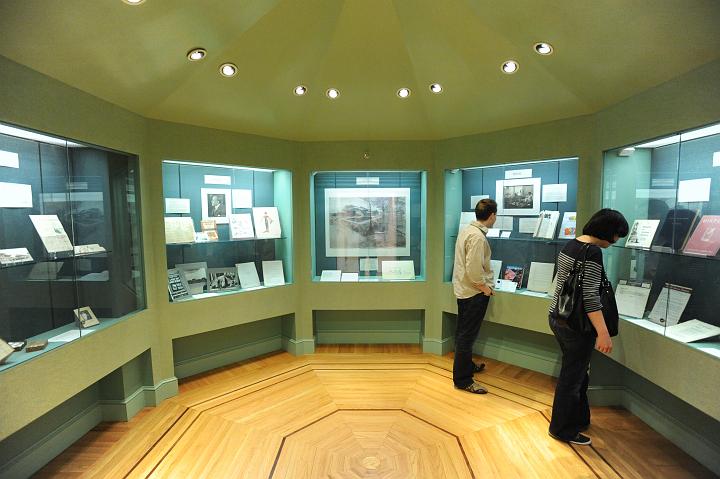Search Results
Community Service Society records, 1842-1995
423 linear feetCorrespondence, reports, memoranda, case records, photographs and printed material. The archive include central and district administrative records; cammittee correspondence and minutes; and files on the various programs--such as sheltered workshops, tuberculosis sanitariums and health centers, public baths and employment bureaus--run by the two organizations. The archive also contains hundreds of photographs, including works by Lewis Hine and Jessie Tarbox Beals; extensive casework files from the beginning of social work (originally referred to as "friendly visiting among the poor"); and copies of masters and doctoral theses from the New York School of Sociel Work and other schools. Much of the research for these theses was based on the CSS files
Dan Carpenter papers, 1880-1993
6.5 linear feetEast Side House records, 1851-1992
18 linear feetThe records include addresses, annual reports, correspondence, memos, minutes, program files, newsclippings, administrative records, photographs, video tape, and film. They include material dating from the decades prior to the establishment of the settlement which shed light on the philosophy and motivation of its founders, and offer a unique view of the first wave of the settlement house movement in America. The records document social conditions, demographic change, political activity and philanthropy in New York City. Addresses by East Side House founder Everett P. Wheeler, included in Series I, document his family history and career as a lawyer and civic reformer prior to the founding of East Side House. Wheeler's correspondence details his role in establishing the settlement and managing it during its first decades.
Edwin H. Armstrong papers, 1886-1982, bulk 1912-1954
295.7 linear feetProfessional and personal files including Armstrong's correspondence with professional associations, other engineers, and friends, his research notes, circuit diagrams, lectures, articles, legal papers, and other related materials. Of his many inventions and developments, the most important are: 1) the regenerative or feedback circuit, 1912, the first amplified radio reception, 2) the superheterodyne circuit, 1918, the basis of modern radio and radar, 3) superregeneration, 1922, a very simple, high-power receiver now used in emergency mobile service, and 4) frequency modulation - FM, 1933, static-free radio reception of high fidelity. More than half the files concern his many lawsuits, primarily with Radio Corporation of America, over infringement of the Armstrong patents. Litigation continued until 1967. Other files deal with his work in the Marcellus Hartley Research Laboratory at Columbia University, 1913-1935, and with the American Expeditionary Forces in France during World War I, his Air Force contracts for communications development, Army research during World War II, the Radio Club of America, the Institute of Radio Engineers, FM development at his radio station at Alpine, N.J., the use of FM in television, his involvement in Federal Communications Commission hearings and legislation, and his work with the Zenith Radio Corporation. Also, letters to H.J. Round
Frances Perkins papers, 1895-1965
71 linear feetCorrespondence, manuscripts, notes, drafts of speeches, appointment books, subject files, documents, photographs, memorabilia and printed materials. There are notes from her lectures on Sociology at Adelphi College in 1911-1912; papers from 1912-1932, when Perkins served on the Commission for Safety and on the Industrial Commission of New York State; the main body of the material is from the period of her cabinet office, 1933-1945; and some items from her days on the Civil Service Commission, 1946-1953. Also included are personal and family papers.
Frank Smithwick Hogan papers, 1932-1975
18.77 linear feetPersonal correspondence, speeches, subject files, photographs, and printed and miscellaneous material of Hogan. The correspondence, speeches, and other material relate primarily to his activities as District Attorney, and to his unsuccessful campaign for the U.S. Senate, 1958. The papers also reflect Hogan's deep concern for Columbia University, as a Trustee and a member of numerous alumni committees. Among the major correspondents are Harry J. Carman, Dwight David Eisenhower, Robert F. Kennedy, Arthur Hays Sulzburger, and Herbert Bayard Swope.
Frederick L. Hoffman Papers, 1881-1989
16 linear feetGoddard-Riverside Community Center records, 1854-1994
51 linear feetThe records include annual reports, board minutes, budgets, by-laws, correspondence, memos, publications, reports, scrapbooks, photographs and printed material. They document the settlement and its antecedent institutions from 1854 to 1994, offering a unique view of the first wave of the settlement house movement in America, as well as related philanthropy and social welfare activities in New York City over a 140 year period. The origins of Goddard-Riverside Community Center are documented in Series I, which includes eight institutional subseries. These records provide a wealth of information on philanthropic, social welfare and settlement work from the mid-19th century through the 1950s. Series II - IV document the activities of the settlement from 1959 to the 1990s, with a particular emphasis on the urban renewal period of the 1960s. Items in Series VII include photographs of staff, activities, facilities of Goddard-Riverside Community Center, as well as several of its predecessor institutions.
Grosvenor Neighborhood House records, 1913-1990s, 2013-2018
12 linear feetHenry Beetle Hough papers, 1841-1994
24 linear feetCorrespondence, manuscripts, typescripts, research files, documents, printed materials, photographs, and memorabilia of Mr and Mrs Hough. Correspondence includes both personal and business letters, dealing with wildlife conservation, civic interests, and birding. There is some correspondence of George A. Hough, Sr., father of H.B. Hough, who was editor of the New Bedford MA Standard. Most of the correspondence is arranged alphabetically, by personal name or subject, out-going and in-coming filed together. Henry and Elizabeth Hough's correspondence, for which there are no in-coming or related letters, are filed chronologically. Cataloged correspondents include Calvin Coolidge, Max Eastman, Helen Keller, John F. Kennedy, Emily Post, and James Reston.
- « Previous
- Next »
- 1
- 2
- 3
- 4
